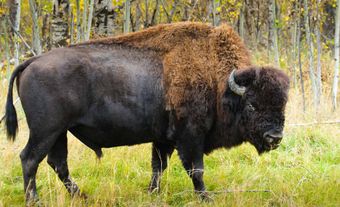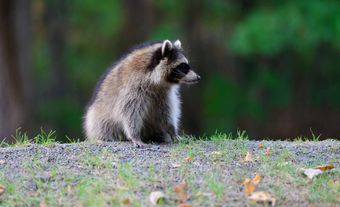Deer Mouse (Peromyscus maniculatus), typical mouse with moderately long tail, large ears, prominent eyes and pointed nose well supplied with tactile hairs. Upper parts are grey or brown, depending on age and subspecies; underside, white. Even the tail is 2-toned.
Deer mice are strongly nocturnal. In winter, the northern deer mouse (P. m. borealis) undergoes bouts of light torpor, lasting for up to several days, in which body temperature may fall several degrees, but it does not actually hibernate.
Distribution and Habitat
Deer mice occur in forests and grasslands throughout Canada, excluding Newfoundland, and down the Mackenzie Valley beyond the Arctic Circle. The large, pale-grey Cascade deer mouse (P. oreas) of the coastal range of BC may represent a distinct species.
Reproduction and Development
Deer mice breed only in summer. Females of northern populations never have more than 2 litters (of about 5 young). In southern Canada, females produce more, smaller litters; some may become sexually mature in the season of their birth. A few animals are known to have survived 2 winters.
Biological Importance
Deer mice may destroy stored food and carry a virus (hantavirus) that in 15-50% of cases is deadly to humans. The virus is transmitted from feces and urine of deer mice deposited on food or inhaled as dust. They provide food for carnivorous birds and mammals.

 Share on Facebook
Share on Facebook Share on X
Share on X Share by Email
Share by Email Share on Google Classroom
Share on Google Classroom





